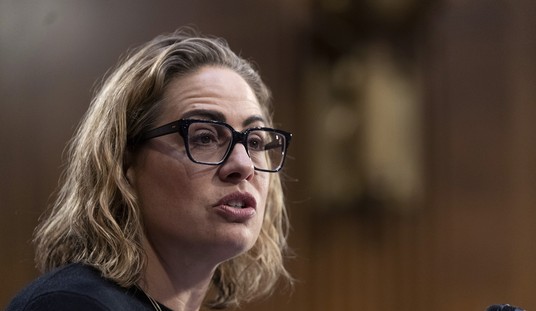Look! Up in the sky! It’s a bird … it’s a plane … it’s — Nano-Drone! A new report from the Congressional Research Service warns that privacy may become a thing of the past in the approach Drone Age, and it may not just be the government taking a look down from the sky. The technology that allows us to fight a war with less risk also creates more risk of government and commercial intrusion in places we may not like, emphasis mine:
The prospect of drone use inside the United States raises far-reaching issues concerning the extent of government surveillance authority, the value of privacy in the digital age, and the role of Congress in reconciling these issues.
Drones, or unmanned aerial vehicles (UAVs), are aircraft that can fly without an onboard human operator. An unmanned aircraft system (UAS) is the entire system, including the aircraft, digital network, and personnel on the ground. Drones can fly either by remote control or on a predetermined flight path; can be as small as an insect and as large as a traditional jet; can be produced more cheaply than traditional aircraft; and can keep operators out of harm’s way. These unmanned aircraft are most commonly known for their operations overseas in tracking down and killing suspected members of Al Qaeda and related organizations. In addition to these missions abroad, drones are being considered for use in domestic surveillance operations, which might include in furtherance of homeland security, crime fighting, disaster relief, immigration control, and environmental monitoring.
Although relatively few drones are currently flown over U.S. soil, the Federal Aviation Administration (FAA) predicts that 30,000 drones will fill the nation’s skies in less than 20 years. Congress has played a large role in this expansion. In February 2012, Congress enacted the FAA Modernization and Reform Act (P.L. 112-95), which calls for the FAA to accelerate the integration of unmanned aircraft into the national airspace system by 2015. However, some Members of Congress and the public fear there are insufficient safeguards in place to ensure that drones are not used to spy on American citizens and unduly infringe upon their fundamental privacy. These observers caution that the FAA is primarily charged with ensuring air traffic safety, and is not adequately prepared to handle the issues of privacy and civil liberties raised by drone use.
This report assesses the use of drones under the Fourth Amendment right to be free from unreasonable searches and seizures. The touchstone of the Fourth Amendment is reasonableness. A reviewing court’s determination of the reasonableness of drone surveillance would likely be informed by location of the search, the sophistication of the technology used, and society’s conception of privacy in an age of rapid technological advancement. While individuals can expect substantial protections against warrantless government intrusions into their homes, the Fourth Amendment offers less robust restrictions upon government surveillance occurring in public places and perhaps even less in areas immediately outside the home, such as in driveways or backyards.
As The Hill reports, that’s not because of a lack of case law. The Supreme Court has ruled that people have a lower expectation of privacy when outside of their house, even when that’s in the backyard. Law enforcement can fly helicopters over private residences to conduct surveillance without a warrant, thanks to earlier Supreme Court decisions, and it’s difficult to see how the court would rationalize a difference between helicopters and drones.
Perhaps the size of the platform will matter. After all, one can pretty easily observe a helicopter flying over the house. That may not be true of drones, at least not for long:
Drones are cheaper to build and fly than manned aircraft, making them more useful to the government for aerial surveillance. Some drones are the size of traditional jets but others — called “nano drones” — can be as small as an insect.
At the moment, military applications drive drone technology, and the military is testing drones built explicitly to look like flying insects, as Impact Lab reported last year:
http://www.youtube.com/watch?v=-LOBSje-3×8&feature=player_embedded
The U.S. military is developing these. innocent-looking devices that are actually some of the most sophisticated drones on the planet. They resemble children’s toys that are left disgarded in closets around the world.
The U.S. Air Force is developing the miniature spy craft with the goal of making them so small that they resemble birds and even insects.
Some even have moving wings that military chiefs hope will look so convincing that people won’t pay them any attention.
The Micro Air Vehicles (MAVs) are being developed at Wright-Patterson Air Force Base in Dayton, Ohio.
For techno-geeks, this looks pretty exciting. For those concerned about domestic application of this technology, the emotion produced is entirely different. Some in Congress are trying to get ahead of the technology with limitations on drone use, but not everyone’s on board with the effort, emphasis mine:
Rep. Austin Scott (R-Ga.) and Sen. Rand Paul (R-Ky.) introduced the Preserving Freedom from Unwarranted Surveillance Act to require that police obtain a warrant in most circumstances before using drones. Paul’s version of the bill explicitly says evidence gathered without a warrant cannot be used in trial.
Rep. Ted Poe’s (R-Texas) Preserving American Privacy Act would only allow police to use drones with a warrant and to investigate a felony.
Rep. Shelley Moore Capito (R-W. Va.) introduced the Famers Privacy Act to restrict the Environmental Protection Agency’s ability to use drones to investigate environmental violations. Sen. Barbara Boxer (D-Calif.) filed an amendment to the 2012 farm bill that would limited the EPA to using drones only if it is more cost-effective than ground inspections, but the amendment was not adopted.
Boxer’s amendment would have been meaningless. Almost by definition, drone surveillance is more cost-effective than ground inspections for any purpose. That’s a nonsense non-limitation, and it died an appropriate death. And while some might be inclined to support drone use to prevent or stop violent crime, how absurd is it that Boxer and perhaps more than a few others in the Senate want to use it for EPA enforcement? That gives us a pretty clear picture of how government will act to embrace and deploy surveillance technology, unless limits are placed on it from the beginning.
The issue isn’t cost efficiency, it’s whether government will become the kind of all-pervasive, all-seeing entity represented by Big Brother in George Orwell’s 1984. I for one will not welcome our new drone overlords.








Join the conversation as a VIP Member